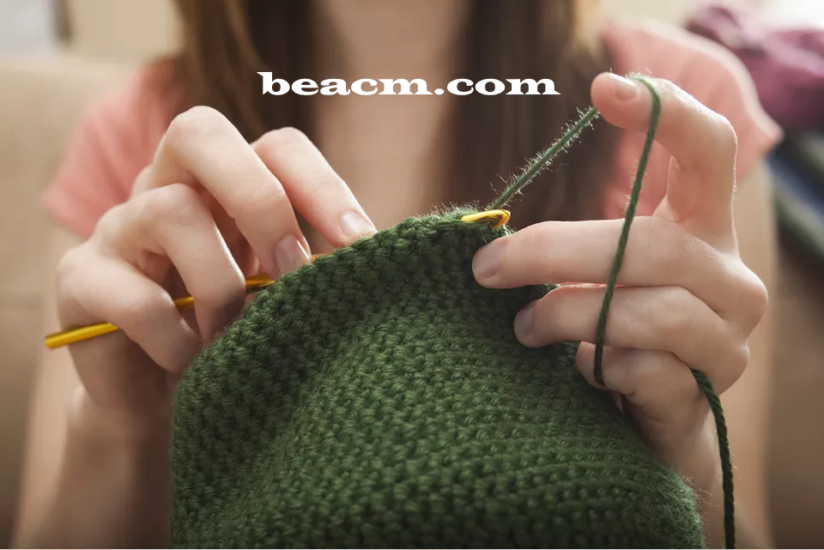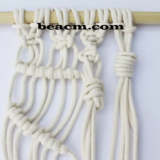To change the size of a hat knitting pattern

To change the size of a hat knitting pattern

If you are familiar with knitting patterns, you may want to resize a project. For example, you might want to reduce an adult hat knitting pattern to the size of a child, or make a hat that was written for a baby for an older child.
The good news is that most hat knitting patterns are relatively easy to change. The only trick is complicated pattern stitches, cables, or colors that you may have to adjust to make the hat look right.
Basic steps for changing the hat pattern size
The same concepts apply regardless of what type of pattern the design uses:
- Find out the size you want.
- Knit a gauge piece.Knitting patterns knit.
- Multiply the number of stitches per inch by the number of inches needed to get an approximate number.
- Refine as needed to match the stitch pattern and the off-take pattern, or change the rate of off-take as needed.
- Decide how long your hat should be.
- Knit and enjoy your new hat.
It’s easier with simple patterns where the math is not complicated.
Gauge Math
Your strength is the number of stitches per inch you knit with your combination of needles and yarn. Multiply your strength by the number of inches needed to get the number of stitches to throw on. Gauge x inch = Stitches required
Reduction
First look at a simple hat pattern and try to make it smaller. A good pattern as an example is the scarf hat, a simple hat with garter stitch and garter edge.
This hat is meant for a teenager or a small woman, but what if you want to make one for a five-year-old child?
Measuring hats can be a little difficult because each head is a different size and grows at a different rate. You can use the diagrams in Bevs Country Cottage as a general guideline if you don’t have the person you are knitting for to measure them.
The chart tells us that a five year old should have a head that is between 19 and 20 1/2 inches. Since this age group is four to ten years old, an approximation to 19 inches would probably work. Since the hats are stretchy, you can knit one that is 1 1/2 inches smaller than the actual head circumference and still fit well.
The chart also suggests that the hat should be 8 1/2 inches deep. With this particular hat, you could be shorter because the scarf serves as an earflap (the teenage size hat, for example, is only 7 1/2 inches).
Once you have your measurements, you should knit a colour pattern to see how many stitches per inch you get with the yarn and needles you choose. Since you are basically rewriting the pattern, you can choose a yarn that is a different thickness and then adjust your math accordingly.
For simplicity, suppose you have five stitches in 1 inch, just as the pattern suggests. If you want to knit a hat that is 19 inches wide, you will cast on 5 stitches per inch times 19 inches, making a total of 95 stitches.
Does this number work for the rest of the pattern? Since this hat is made of garter and stockinet stitches, this is the case. This is because none of these stitch patterns are based on a specific multiple of stitches.
The number also works with how the tails are written. Decreases of the original pattern start with a knit three, knit two together round, which requires a multiple of five to come out evenly. Since 95 is evenly divided by five, this pattern works without changes except for the number of stitches applied and the length of the hat. You may need to add or subtract some stitches for another pattern to work.
Dimensioning
Working in the other direction uses almost the same method. This time look at the baby hat with a seed stitch and assume that you want to knit it for a one-year-old child.
Back to the size chart: The circumference of a toddler’s head can range from 18 to 20 inches. The finished hat can be 17 inches so it can stretch to fit. The table also suggests 8 inches for length.
You would knit a color pattern. Using five stitches per inch as an example, you would multiply five stitches per inch by 17 inches to get 85 stitches needed.
For both the rib and seed stitch used in this pattern, we need a number of stitches divided by two, which 85 does not. However, you can either go one stitch up or down and you will be fine. Try 84 stitches.
Looking at the design, the acceptances in the first round show a variety of acceptance possibilities. You might want to take out your calculator and see what 84 are divided equally into. The answer is four. So the easiest way would be to skip this first round of acceptance and start with a working round two, two working together (which requires four stitches each time). It will not make much difference in the finished hat.




